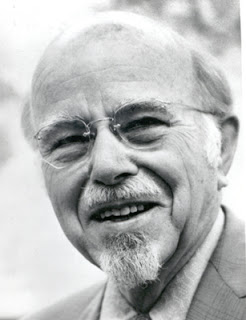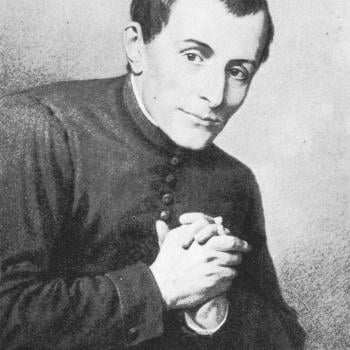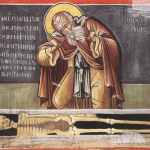When I first started working in ministry I asked a local ministry leader if he could teach me what he knew about doing youth ministry. He told me that he would meet with me once a week and talk about how he did things, and why they worked (or didn’t work), and then he handed me a book entitled “The Purpose Driven Youth Ministry,” saying “this is a ‘must read’ for anyone serious about doing youth ministry”. This was my first experience with the philosophy, theology, and sociology of the Saddleback church. For decades Saddleback has been one of the largest churches in the United States and has gained a national platform to talk about what it means to be the church in the 21st century. Much of what has made Saddleback so influential is something called the church growth movement.
The church growth movement was started primarily through the writings and teachings of a man named Donald McGavran. His book The Bridges of God sparked the interests of many in the missionary community and eventually became a way that pastors within the United States itself began to look at how to make their churches more successful. In his book The Purpuse Driven Church, Rick Warren, pastor of Saddleback, explains the ways that Church Growth ideas were a turning point in his ministry, and the reason that he planted Saddleback church over 30 years ago. That church has become one of the prime examples of “successful church growth.”
Although I haven’t thought much about what Saddleback was doing since my earliest days of ministry. I recently read through Warrens 1995 best seller, The Purpose Driven Church (PDC), and was drawn into revisiting what this church (and the church growth movement in general) was all about, and how it continues to be a paradigm that shapes the church today.
The church growth movement was started primarily through the writings and teachings of a man named Donald McGavran. His book The Bridges of God sparked the interests of many in the missionary community and eventually became a way that pastors within the United States itself began to look at how to make their churches more successful. In his book The Purpuse Driven Church, Rick Warren, pastor of Saddleback, explains the ways that Church Growth ideas were a turning point in his ministry, and the reason that he planted Saddleback church over 30 years ago. That church has become one of the prime examples of “successful church growth.”
Philosophy
Church Growth philosophy is grounded in three affirmations:
- God wants His lost children found and enfolded. Church growth explodes from the life-giving nature of the eternal God.
- Responsible research into the causes and barriers to church growth must be completed.
- Leaders must craft specific plans based on the facts that are discovered.
Motivation
To understand why this developed its important to understand the culture of the 20th century mission world. McGavran had grown up in the mission world and became disenchanted with how so many efforts seemed to be failing to bring people in. He noticed that some movements would have great success. He began to look for the reasons these movements, mostly led by people native to the culture, were successfully.
Problematic Elements
There are a few problems that emerge out of the “church growth philosophy”.
- The affirmations McGavran developed were a response to successful movements created by people within the culture that was being reached with the Gospel. As the affirmations were implemented, however, sometimes the culture was evaluated by those outside the culture. As a result some of the things that were evaluated as barriers were removed rather than redefined in culturally significant ways. This has resulted in many churches that have been accused of being to shallow in their theology and their discipleship.
- Secondly the Philosophy of Church Growth was designed to be implemented in the sphere of world missions. When it was imported in to the United States by people like Rick Warren, and many others problems began to surface. Church Growth was designed in many ways to reach “un-churched” areas of the world. When Warren stated his church he planted in an area where most of the people had access to healthy churches. In PDC Warren confesses that although he had intended the church to be geared at unbelievers his church also attracted people who were already involved in Churches. Even though Warren encouraged people to remain in their home churches many people left healthy congregations to join the Saddleback community.
- In this model if your church is shrinking it must be because you are doing something wrong. This can place the emphasis on numbers rather than the faithfulness of the church. Rick Warren writes “If your church is healthy, growth will occur naturally.” This sets up a false expectation and places God in a box.
Redemptive Elements
This “philosophy” gets a lot right. It offers a hope in every context that God is at work and that God’s people can have an impact in significant ways in the place they live. Church growth forces people to do less navel gazing, and more cultural exegesis which is something very important. Church Growth leaders are generally doing good things in their community. I belive that the philosophy is beneficial as long as church leaders:
- keep on exegeting the cultural
- Are led by members of the indigenous culture
- Evaluate if their movement might be creating new barriers for others
Theology
Church Growth Theology is grounded in looking at the scriptures for principles that can be implicated in any context if proper cultural exegesis is done. In explaining how he went about writing PDC, Rick Warren explains he used primarily the scriptures, calling the Bible the best handbook on how to grow a church.
Motivation
The Theology of church growth stems out of McGraven’s concerns with ethno-theology. Ethno-theology is a theology based on context rather than a systematic look at the scriptures. In this framework many missionaries were doing acts of mercy, but doing very little preaching. McGraven was concerned that people were missing on the central purpose of mission saying “A chief and irreplaceable purpose of mission is church growth.”
Problematic Elements
Reading the Bible through the lensRedemptive Elements
of church growth can mean you won’t see places where God is moving in other ways. By dogmatizing growth as something that needs to happen other elements of the life of the church can be put by the wayside. God needs to be given room to move in other ways. Limiting God to one mode of operation guarantees you will miss out on the things God is doing that don’t fit into the paradigm.
Redemptive Elements
The Church Growth Movement recognised a real problem. When the work of the church is separated through the very particular events of God’s redemption it can easily devolve into simply a philosophy to believe rather than a person to follow. When the work of Christ on the cross is given a “back seat” to issues of justice the true power to break the bonds of sin that cause injustice in also removed from the foreground.
Sociology
The Sociological implications of the church growth movement are deeply tied to the missionary mindset of McGavran. Churches who follow this model often see themselves as missionaries to their community and seek to address particular people groups with the Gospel message. McGavaran believed mass movements were always tied to a people (tribe, caste, or clan). In PDC warren tells pastors that they need to know their community better than anyone else. He specifically targeted people in his community that fit the demographics he was trying to reach. In other contexts warren tells people to target the group they are trying to reach with context that fit their particular context. This is all to create groups of “disciples” that can impact the wider culture.
Motivation
People are drawn to those which they are like. Warren believes Saddleback is a church created to love God, and others through making disciples. In order to reach the people in his community his church needs to look like the community. His whole church model reflects this. People make a deeper and deeper commitment to the church and are then sent back out into the community to bring in more people. Warren’s goal is to reach every person in his community.
Problematic Elements
One problem that has come out of this general “philosophy” is that churches like Saddleback can often target a “type” of person. Having a “type” can mean that those who don’t fit the “type” can be excluded. If the people (tribe, caste, or clan) you are reaching are the powerful and prominent members of a community, often the outcast (those that Jesus often tried to associate with) will be the ones left out.
Redemptive Elements
There is a reason that the Church Growth “philosophy” has sparked a social movement. It meets people where they. It help to affirm cultural values and cement the cultural identity of individuals. This has a power that can help redeem the church in many ways too. Being aware of culture is essential if are serious about affirming the wide implications of the Gospel. As the church becomes more and more aware that the torch of Christianity will be a global endeavor, learning how the Gospel fits within cultures without being defined by cultural barriers can dispel fear and open people to embrace the work of God in other contexts. The Church Growth Movement has forced many people to be intentional about contextualization and serves as a constant reminder that diversity is something that God embraces.













